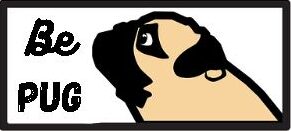Are Pugs Easy to Train? Tips for a Smarter, Calmer Pup

Disclosure: This post contains affiliate links. As an Amazon Associate, I earn from qualifying purchases—at no extra cost to you.
Pugs have a way of winning people over with their squishy faces, clownish behavior, and deep loyalty. But when it comes to training, these little charmers can be just as stubborn as they are adorable. That doesn’t mean training is impossible—it just means you’ll need the right mindset, patience, and a few smart strategies to bring out the best in them.
Whether you’re working on house training, basic commands, or managing overexcited behavior, it helps to know what works for this quirky breed. Here’s what to expect—and how to make progress without frustration.
Pugs Can Learn—If They’re Motivated
Pugs are smarter than some people give them credit for. But they can also be a bit headstrong. Many pug owners say their dogs understand commands but won’t always follow through unless there’s something in it for them.
That’s why positive reinforcement is so important. Small, tasty treats tend to work wonders, along with cheerful praise and plenty of repetition. Training sessions should be short—ideally 5 to 10 minutes—and done in a calm environment with few distractions. This helps your pug stay focused without getting overwhelmed.
What Makes Training Pugs Tricky
One of the biggest challenges with pug training is consistency. These dogs like routine and respond well when their environment is predictable. But they also get bored easily. Repeating the same command over and over again without any variation can make them tune out fast.
You also have to consider their physical limitations. Pugs are a brachycephalic breed, which means their short snouts can make breathing difficult—especially during hot weather or intense activity. Outdoor training sessions should be kept short and cool, or moved indoors when needed. Many owners prefer using structured, home-based training routines that fit the pug’s pace and comfort level.
Gentle, Step-by-Step Help from Kingdom of Pets
If you’re looking for a more structured approach, Kingdom of Pets is a popular resource among pug owners. This online training program breaks things down into easy-to-follow steps, making it less overwhelming—especially for first-time dog parents.
It focuses on calm, reward-based methods that avoid punishment or pressure. The program covers common issues like barking, leash pulling, housebreaking, and more. According to pug forums and community feedback, the tone and pace of the program suit small, sensitive breeds like pugs. And since everything is online, it’s easy to work through at home, on your own time.
Routine, Rewards, and Realistic Expectations
Pug owners often share that their best training progress came when they stayed consistent without being pushy. Start by building simple habits—like sitting before meals, waiting at the door, or responding to their name. Use high-value treats (like soft chews or tiny bits of chicken) and lots of cheerful encouragement.
And don’t forget: every pug is a little different. Some are food-driven, while others are more stubborn or playful. That’s why it’s helpful to adapt your style based on how your individual pug responds.
Check Price & Availability
If you’re interested in a training program that’s been used by many small dog owners, check out the link below:
Conclusion
Pugs can absolutely be trained, but they need structure, consistency, and a bit of creativity. Their intelligence and personality shine through when training is done with patience and positive reinforcement. For pug owners who want support without stress, online programs like Kingdom of Pets can be a helpful guide—especially for building trust and reducing frustration during those early training stages.






